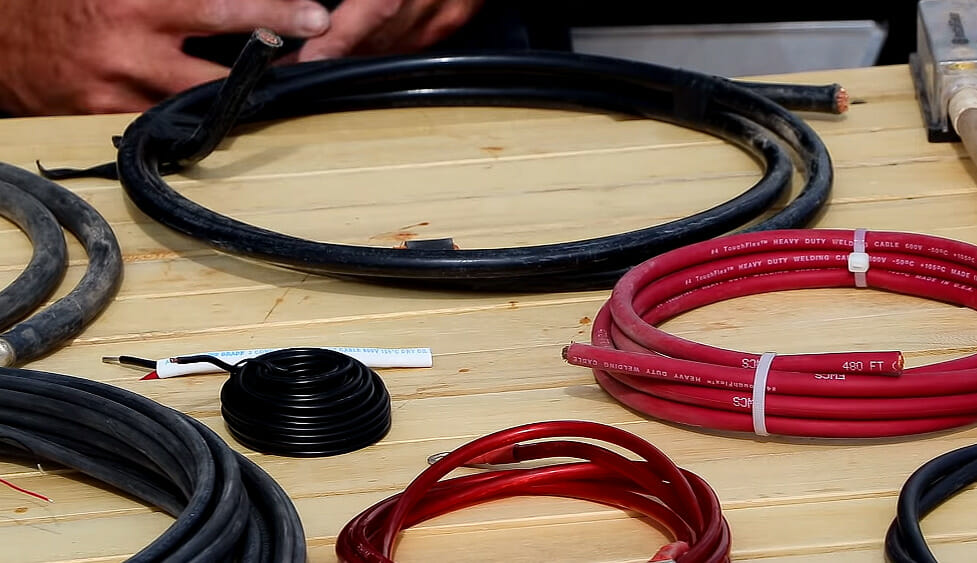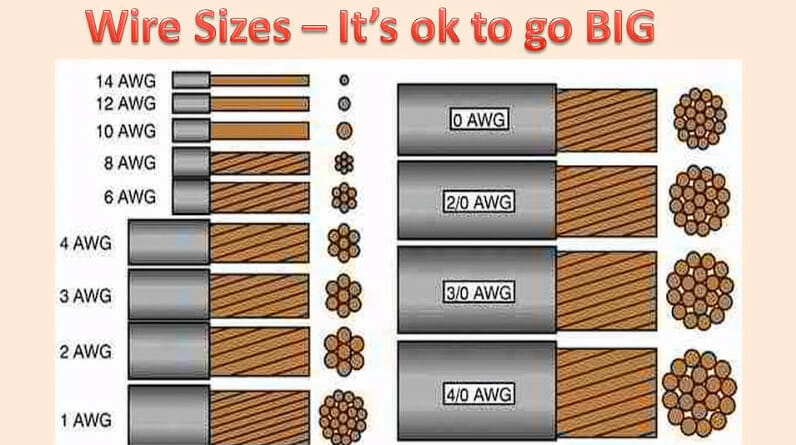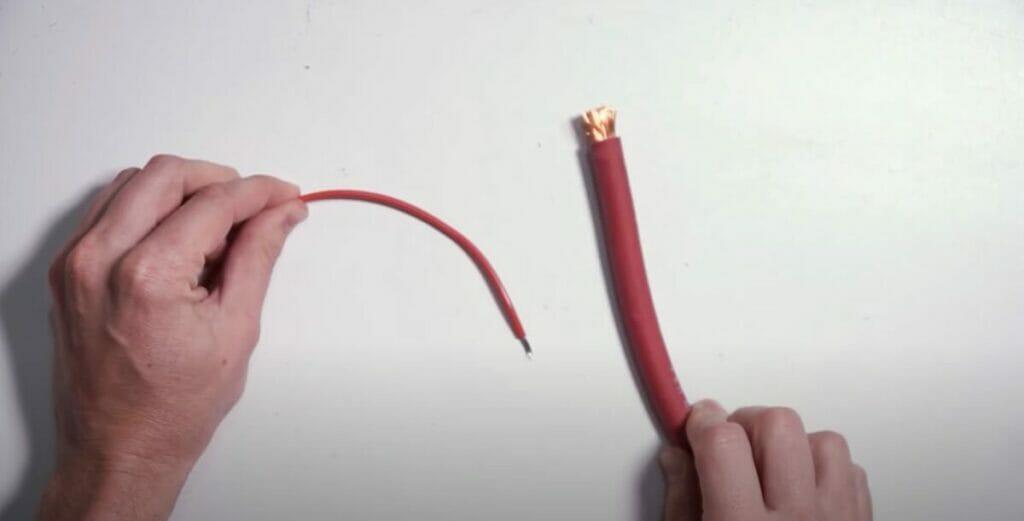What Size Wire for 50 Amp 200 Feet (Wire Gauge, Electrical Load, Sizing)

When figuring out the right size wire for 50 amps over a distance of 200 feet, there’s more to consider than just numbers. You’ve got to think about voltage drop and the type of load as well. So let’s dive in!
Key takeaways – According to the NEC, a 4-gauge copper wire is recommended, or possibly 2-gauge for distances over 200 feet, to ensure safety and efficiency. Therefore, when selecting the correct wire size for a 50 amp circuit over 200 feet, you must consider current carrying capacity, voltage drop, and distance.
Let’s dive deeper!
Factors That Influence Wire Size Selection

Now, let’s dive into the nitty-gritty. Choosing the right wire size for a 50 amp circuit that’s 200 feet long isn’t as simple as picking up the first cable you see in your local hardware store.
Oh no, it takes more thought than that! There are some essential factors to consider when choosing the correct wire size, and I’m here to help you understand them.
First off, there’s current carrying capacity. This is all about how much electrical current (measured in amperes or ‘amps’) a wire can safely carry without overheating and potentially causing a fire.
For circuits with a 50 amp breaker, we need to ensure our chosen wire can handle this load comfortably.
Next up on our list is voltage drop. It’s the decrease in electrical potential along the path of a current flowing through an electrical circuit. And why should we care about it?
Because excessive voltage drop could lead to insufficient power at the receiving end of your circuit – and nobody wants that!
Another crucial factor is distance. The longer our circuit, like our 200 feet example here, the larger gauge (diameter) of wire we’ll need.
Let’s not forget about one last thing – wire material! Copper and aluminum are most commonly used for wiring because they offer good conductivity. Still, copper outshines its rival as it has better resistance to the heat generated from electricity flow.
So when selecting your wire size, remember:
- Current Carrying Capacity
- Voltage Drop
- Distance
- Wire Material
There you have it, folks – just like picking out curtains for your living room windows – choosing the right wire involves more than meets the eye!
Determining Wire Size for a 50 Amp Circuit Over 200 Feet

Let’s dive right into this. When figuring out “what size wire for 50 amp over 200 feet”, things can seem pretty daunting.
First up, let’s talk about voltage drop. Over long distances, electrical current can lose some of its ‘oomph’ – which we call voltage drop. For most household circuits, it’s recommended to keep this under 3%.
Now let me tell you, loads of nifty online calculators can do the math for you (and save you stress!). But if you’re curious about the manual calculation process – don’t worry; I’ve got your back!
Here’s how it works:
The basic formula is Voltage Drop = Current * Resistance
The resistance depends on your wire’s length and cross-sectional area (AKA its gauge).
To keep things simple:
Shorter wires or bigger gauges will lead to less resistance.
Longer wires or smaller gauges will result in more.
So with our given setup – a whopping 200 feet at 50 amps – I crunched some numbers, and voila! Here’s what I found:
| Gauge | Diameter (inches) | Safe Amperage |
|---|---|---|
| #2 | .2576 | ~95 |
| #4 | .2043 | ~85 |
| #6 | .1620 | ~55 |
Remember: Safety first! Always consult with an experienced electrician before making any decisions on wiring.
Practical Examples and Ideal Wire Gauge for a 50 Amp Circuit Over 200 Feet
| Scenario | Description | Ideal Wire Gauge |
|---|---|---|
| Setting Up a Recreational Vehicle (RV) Park | You’re setting up an RV park and need to provide electrical hookups for RVs up to 200 feet away from your main electrical supply. | 4 AWG or 2 AWG Copper |
| Home Workshop or Garage | You’ve built a detached garage or workshop 200 feet from your main house. You need to run heavy-duty tools or machinery that require a 50 amp service. | 4 AWG or 2 AWG Copper |
| Outdoor Entertainment | You’re installing a high-powered outdoor entertainment system or kitchen in your yard 200 feet away from your home’s main power supply. | 4 AWG or 2 AWG Copper |
| Agricultural Needs | On a farm, you might need to power machinery or equipment that’s a good distance away from your primary power source. If the equipment needs a 50 amp service and it’s 200 feet away, you’ll need to ensure that you choose the correct wire size. | 4 AWG or 2 AWG Copper |
| Installation of a Distant Hot Tub or Pool | You’re installing a hot tub or a pool that requires a 50 amp service, and it’s located 200 feet away from your house. | 4 AWG or 2 AWG Copper |
Note: Always consult a professional electrician before deciding about electrical wiring to ensure safety and code compliance. The wire gauge needed can vary based on factors like voltage drop, which should ideally be less than 3%.
Recommended Wire Size for 50 Amp at 200 Feet

I’ve gotta tell ya, when it comes to wire size for a 50 amp circuit over a distance of 200 feet, you don’t want to take shortcuts. It’s not just about ensuring your system works well; it’s also a matter of safety.
So let’s dive right in!
First things first, the resistance of the wire increases with its length. That means you’ll need a thicker wire to compensate if you run a long stretch, like 200 feet.
According to the National Electrical Code (NEC) chart, for direct current (DC), we’d typically use six-gauge (6 AWG) copper wire for up to around 150 feet. But remember, we’re talking about 200 feet here!
| Distance | Wire Gauge |
|---|---|
| ≤150ft | #6 |
| ≤200ft | #4 or #2 |
So, with this extra bit of distance in play, I’d recommend jumping up two sizes to four-gauge (4 AWG) copper wire. However, for distances greater than 200 feet, you might consider using a two-gauge (2 AWG) wire.
We’ve got another thing to consider here, too – voltage drop. As mentioned, this is how much power gets lost as electricity travels along the wire.
You might think, “Hey! It’s just an electrical current zipping through metal!” but even that little trip can wear out some electrons!
In most residential situations, you want your voltage to drop under three percent. With 4 AWG copper at our stated length and amperage? You’re looking at roughly a two percent drop – and that’s pretty good going in my book!
Ensuring Code Compliance and Safety with Proper Wire Sizing
Maybe you’re wondering how to stay safe and code-compliant when sizing wire for a 50 amp 200 feet run.
First off, remember that safety is your #1 priority. One bad decision can lead to overheating wires, melting insulation, or even fires. So here’s my advice: always choose the correct size wire!
According to the National Electrical Code (NEC), for a 50 amp circuit with a length of 200 feet, you’d typically need a 4-gauge or 2-gauge wire.
But hold your horses! This is just a general guideline. Other factors, like voltage drop, may affect the exact size needed.
So how do you manage this? Well…
- First up: consider using larger gauge wires than what’s recommended by NEC if you’ve got particularly long distances.
- Second: keep those volts in check! A voltage drop shouldn’t exceed 3% under max load conditions for an individual branch circuit.
- Lastly: when in doubt, consult with an electrician or electrical engineer. These pros know their stuff and can help you make safe choices.
Let me tell ya, getting this right isn’t just about following rules—it’s about keeping everyone around safe…and that’s priceless!
So there ya have it – my two cents on ensuring code compliance and safety when sizing your wires for those long hauls!
References
Organizations:
- National Fire Protection Association (NFPA). http://www.nfpa.org/
- Institute of Electrical and Electronics Engineers (IEEE). https://www.ieee.org/
- National Electrical Contractors Association (NECA). https://www.necanet.org/
Video References:
CheapRVliving
ArizonaHotHomestead
EXPLORIST life – DIY Campers
